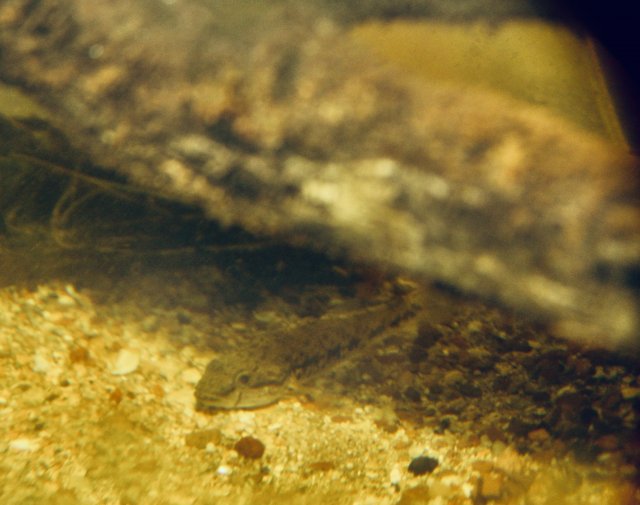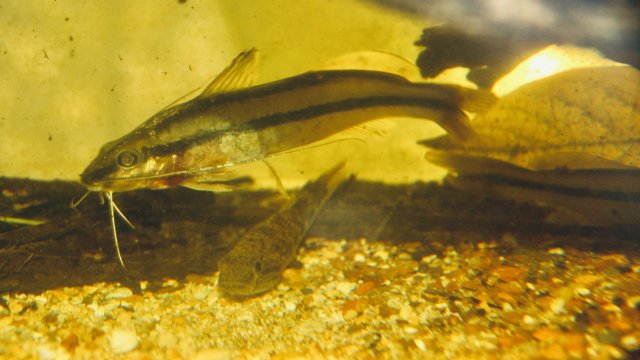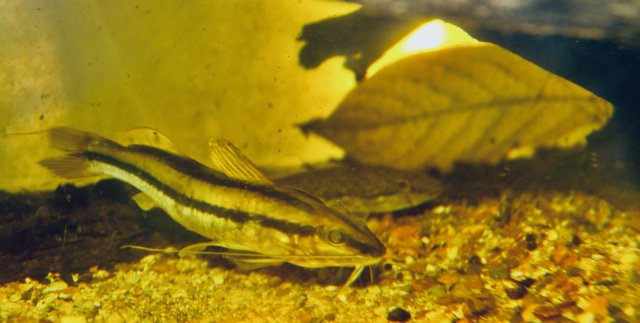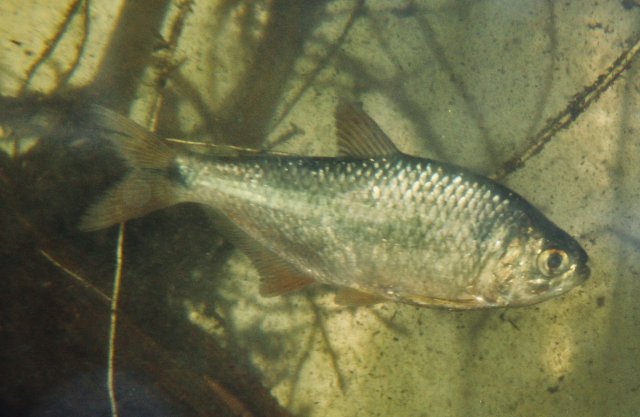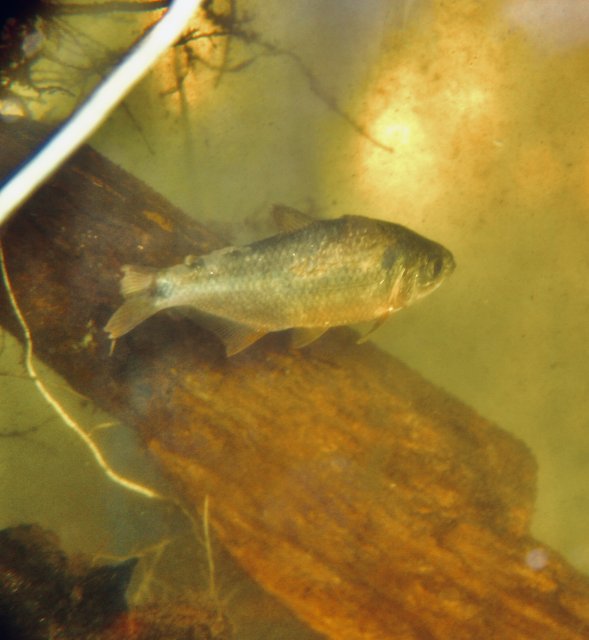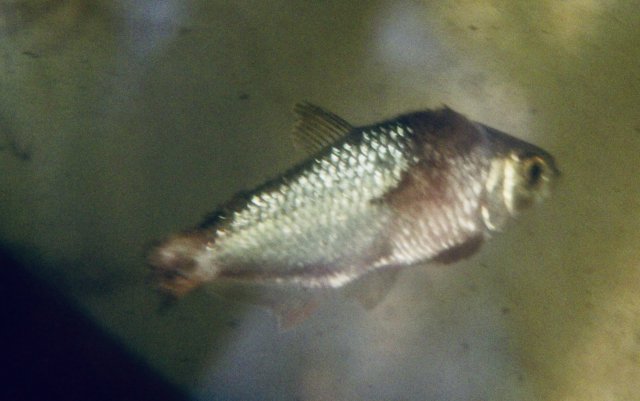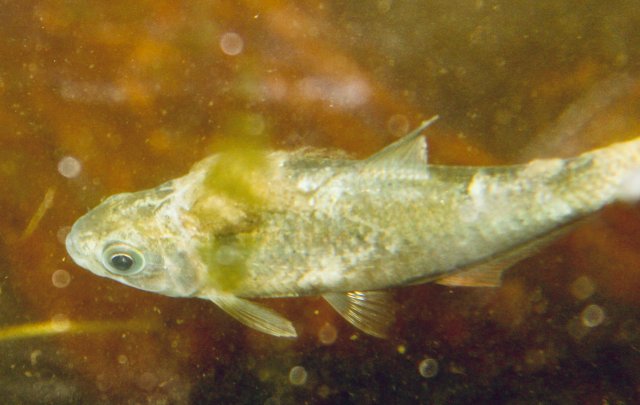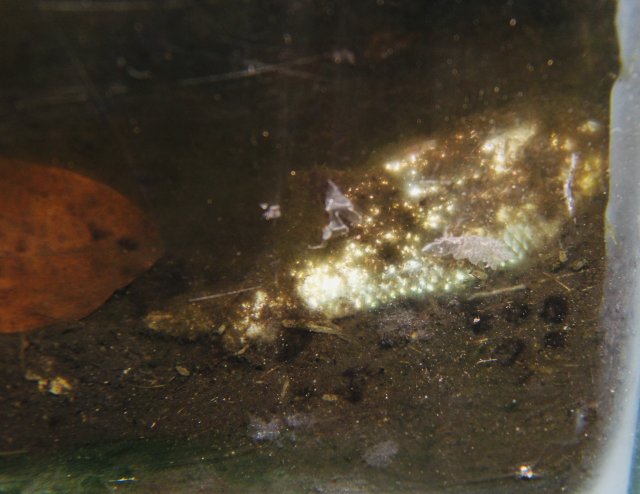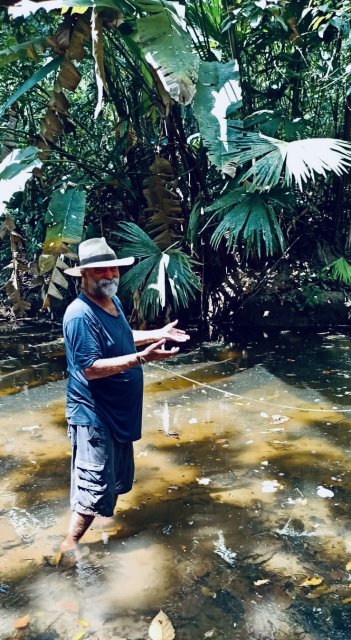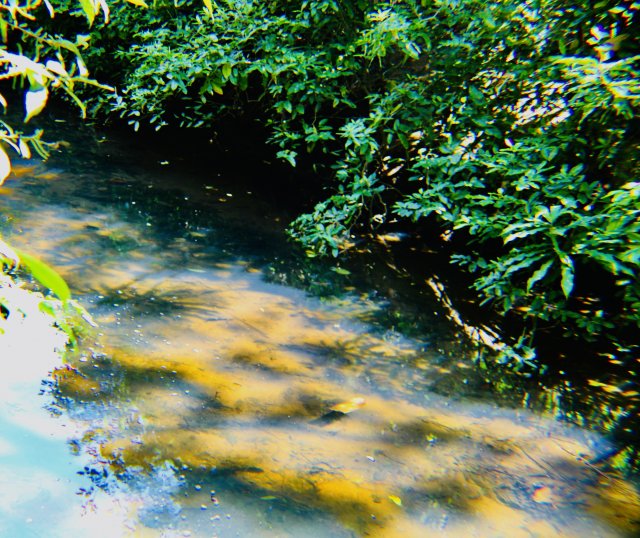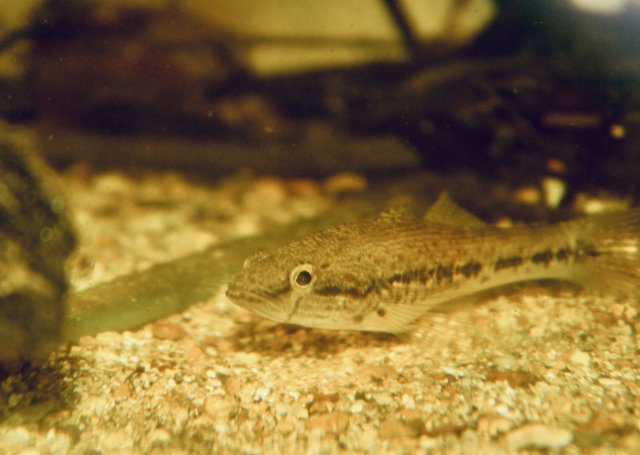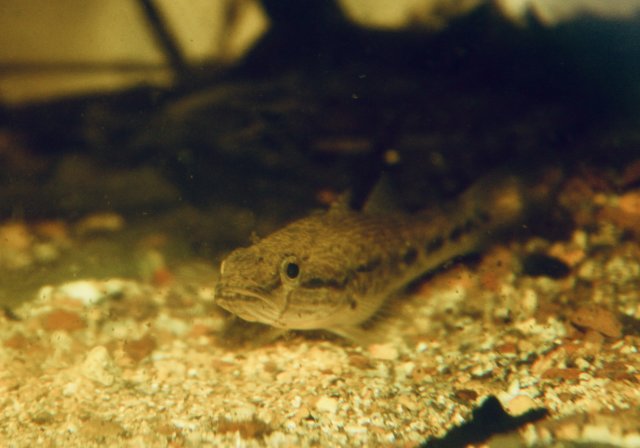It is still the dry season here in Panama, but the rains are soon to be approaching, and when they hit, the rivers become ragging torrents, difficult to collect in, with a cast net.
Rio Pedro Miguel was the 5th stop in my attempts to collect endemic cichlids, since my first ill fated attempt at Lago Mira Flores in late Dec.
It is a narrow river that feeds the Panama Canal flowing down from the central highlands.
My first stop was an area just north of the canal pipeline.
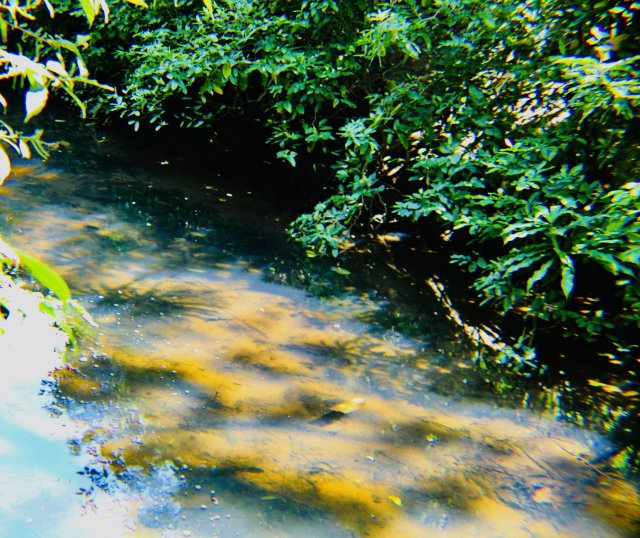
It looks deceptively shallow, but there was a lot of sunken debris and logs, so the net kept getting caught on stuff, I slid down the embankment, in up to my neck trying to dislodge the net after the first cast.
I could see lots of Tetras, and large mullet there, but a better logistical casting spot was needed, so (Danny my driver and I) needed to move to a less cluttered spot up river,
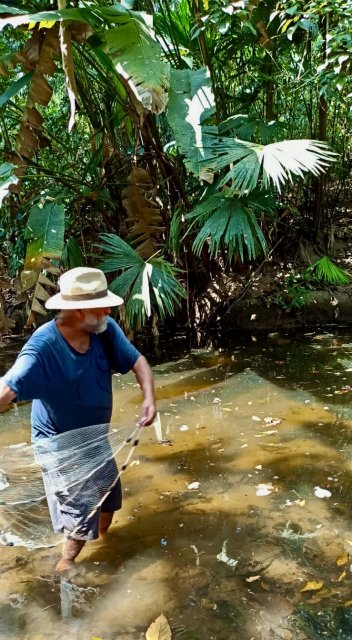
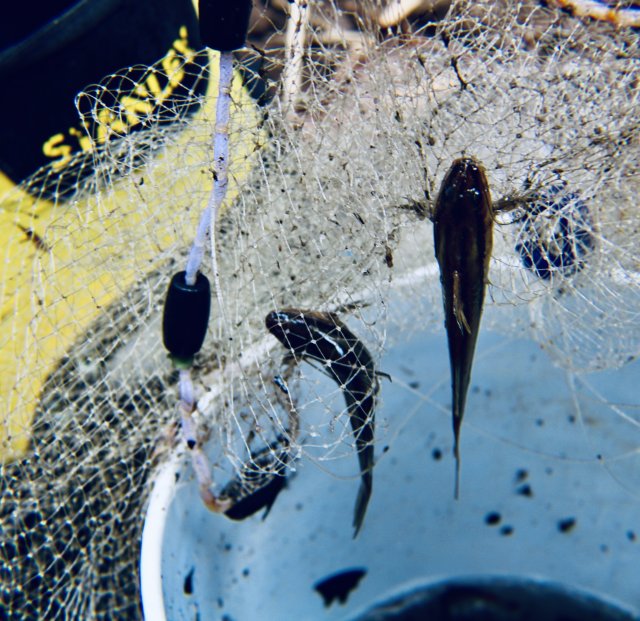
The river was much shallower here, the banks more accessible, so I had enough space to get a good swing, across to deeper areas, on the opposite side of the stream, and into the shadows.
Beside the tetras, the net was pulling up catfish, and one Guavina (goby).
The tetras did not take well to being in a bucket, and started floundering within a hour even though the battery operated pump was running well, and I was constantly switching out river water.
As soon as I noticed any tetras listing they were thrown back.
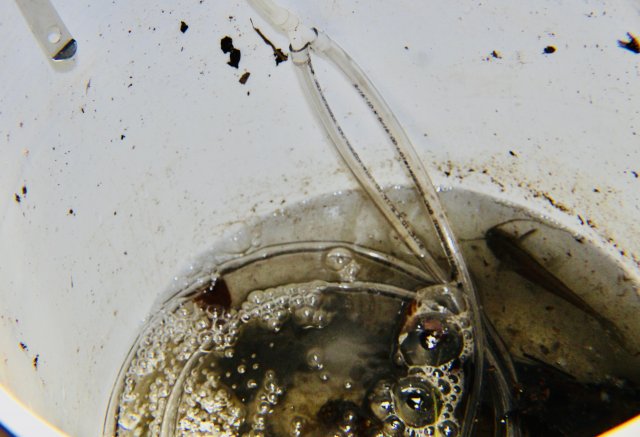
After collecting, we had at least another hour long drive to the ferry dock, an hour wait forthe ferry, a 10 mile bit of Pacific to cross, and a 20 minute walk to my home, and tanks in Taboga .
In the end only 3 Tetras survived the journey, most of the tough catfish, and goby did to.
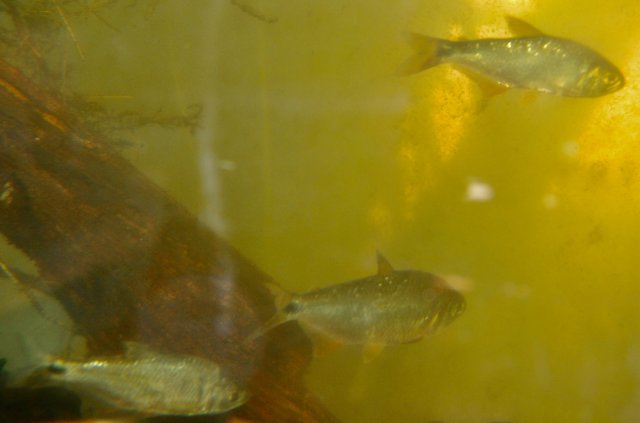
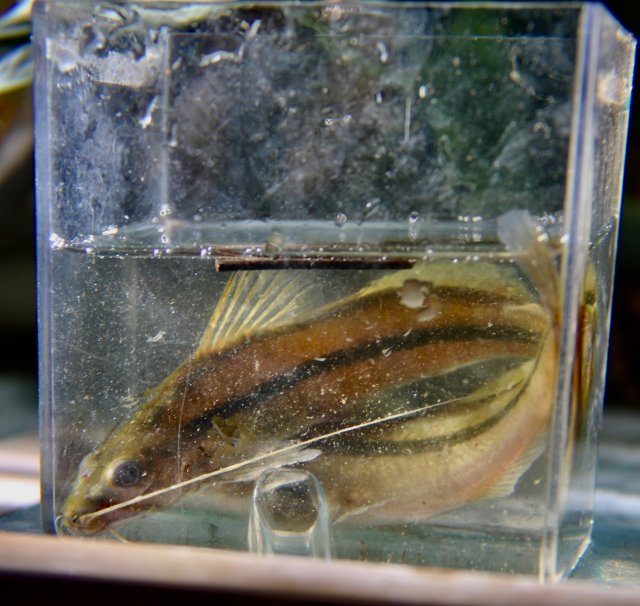
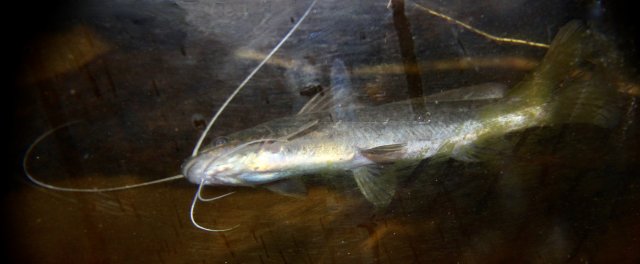
The Goby is very secretive, and hard to get a shot of, the tank is quite stirred up from the ruckus.
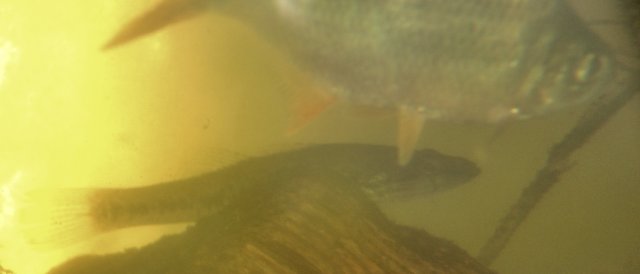
As a matter of course, I always take water parameter readings with an API strip wherever I collect, to get a ballpark idea whether the fish will work in my tanks water. or not.
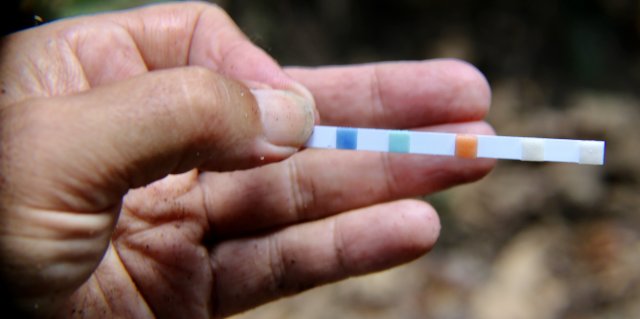
Looks like undetectable nitrite, and nitrate, a pH between 7.6 and 7.8, KH between 80 and 120, and a GH somewhere in the neighborhood of 100, to 120.
This was yesterday, overnight a couple catfish have kicked the bucket, injured from being to seriously getting tangled up in the net, and their extraction from it.
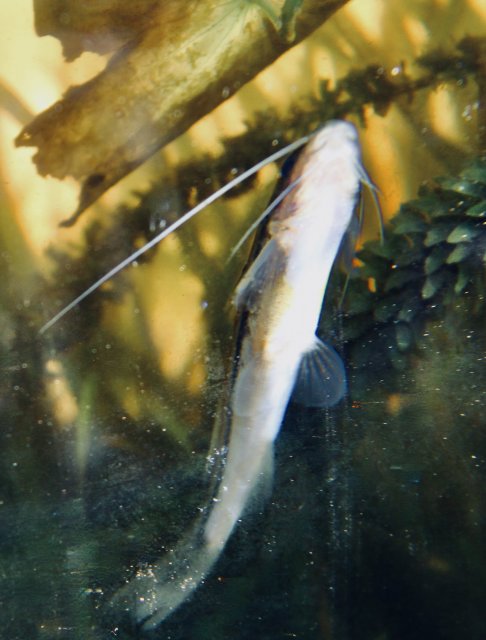
Today will be used to try to determine species using the taxonomic key in my field guide, Peces de las Aguas Continentals de Costa Rica, by William Bussing.
Rio Pedro Miguel was the 5th stop in my attempts to collect endemic cichlids, since my first ill fated attempt at Lago Mira Flores in late Dec.
It is a narrow river that feeds the Panama Canal flowing down from the central highlands.
My first stop was an area just north of the canal pipeline.

It looks deceptively shallow, but there was a lot of sunken debris and logs, so the net kept getting caught on stuff, I slid down the embankment, in up to my neck trying to dislodge the net after the first cast.
I could see lots of Tetras, and large mullet there, but a better logistical casting spot was needed, so (Danny my driver and I) needed to move to a less cluttered spot up river,


The river was much shallower here, the banks more accessible, so I had enough space to get a good swing, across to deeper areas, on the opposite side of the stream, and into the shadows.
Beside the tetras, the net was pulling up catfish, and one Guavina (goby).
The tetras did not take well to being in a bucket, and started floundering within a hour even though the battery operated pump was running well, and I was constantly switching out river water.
As soon as I noticed any tetras listing they were thrown back.

After collecting, we had at least another hour long drive to the ferry dock, an hour wait forthe ferry, a 10 mile bit of Pacific to cross, and a 20 minute walk to my home, and tanks in Taboga .
In the end only 3 Tetras survived the journey, most of the tough catfish, and goby did to.



The Goby is very secretive, and hard to get a shot of, the tank is quite stirred up from the ruckus.

As a matter of course, I always take water parameter readings with an API strip wherever I collect, to get a ballpark idea whether the fish will work in my tanks water. or not.

Looks like undetectable nitrite, and nitrate, a pH between 7.6 and 7.8, KH between 80 and 120, and a GH somewhere in the neighborhood of 100, to 120.
This was yesterday, overnight a couple catfish have kicked the bucket, injured from being to seriously getting tangled up in the net, and their extraction from it.

Today will be used to try to determine species using the taxonomic key in my field guide, Peces de las Aguas Continentals de Costa Rica, by William Bussing.
Last edited:



